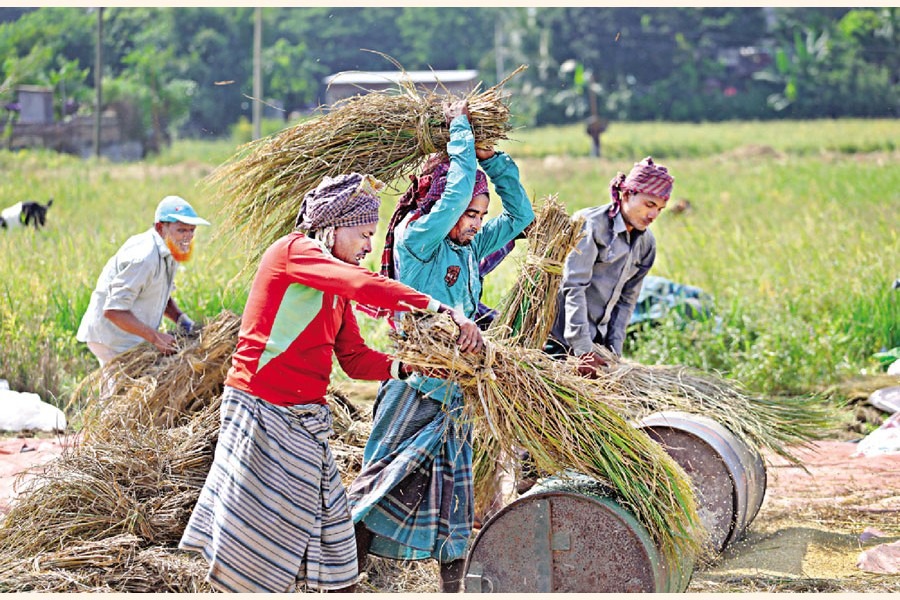Tags
Price hike of rice in peak harvesting season

A fresh spurt in rice price right in the peak harvesting time is unexpected but not ruled out altogether. It may happen if the harvest is very poor and there is no arrangement for supplementing the anticipated shortfall of the staple cereal. But as many as 277 private importers have been given permission to import 1.481 million tonnes of rice. According to another report, private importers have taken permission for importing 1.6 million tonnes of rice from India. As part of an effort to arrest the price hike of the staple, the National Board of Revenue (NBR) also withdrew import duties and regulatory taxes on import of rice. Accordingly, the import started on November 13 with 27,000 tonnes of rice arriving at Chittagong Port in the first consignment. Truck-loads of rice started arriving in the country from November 17.
Notwithstanding the government’s sincere efforts, price hike could not be contained either in the pre-harvest or at this peak harvesting time. This defies logic. The duty waiver was not granted for the importers and rice traders to benefit from. It was done to give some relief to the consumers. But the traders and importers have, as always, their excuses to dictate terms and raise prices. This time they say that rice price is higher in India and they had to import rice at higher prices. How much higher that is? Another report carried in a Bangla contemporary has it that the imported rice through Benapole port was priced at $410 per tonne. The import cost for a kilogram of rice thus comes to Tk 50-51. Understandably, this variety is coarse. The price of which was in the range of Tk55-58 has now shot up to Tk60-62. The medium quality and finer varieties have registered price escalation by Tk5.0-6.0 and Tk6.0-8.0 respectively.
The question is, why should the duty waiver not have any reflection on the staple’s price? If the duty waiver has the opposite effect on the price trend, it means the importers and traders want to have their cake and eat it too. They have their intrigues to do so. When the rice market was jittery during the pre-harvest period, the importers deliberately delayed import of the cereal. Now another dimension has been added to the ploy. Anticipating rice shortfall in the lean season, millers and stockists are in an intense competition to raise their stocks. So, at least farmers growing rice are getting a good price. This time they are doubly happy because following the floods, the weather was good for the planted Aman crop and also pest attack was hardly reported. Thus the increased acreage of Aman cultivation and good harvest together have favoured cultivators of Aman paddy.
It is against this background, importers and stockists and millers are trying to build stocks of their own in the hope that they can take full advantage of the market by taking control of the supply chain. Of course, they will do so collectively but right now they are competitors because the bigger the stock is, the greater the profit. In fact, those involved in trade syndicates are a species lacking in responsibility and any consideration for the country and their compatriots. Their only concern is for profit at its maximum. They have been practising such outrageous manipulation and manoeuvring for long and will not give up unless they are forced to.
The only way is to bring their letters of credit (LC) and other related documents under closer scrutiny and compare the stated prices with the export price of the source country. India is not a distant country and international prices set for export is no secret. So it would be in the fitness of thing to do this leg work by the food ministry and other authorities concerned. Importers must be made to readjust the runaway prices on the basis of importing cost in order to restrain them from reaping outrageous profits.
https://thefinancialexpress.com.bd/views/opinions/price-hike-of-rice-in-peak-harvesting-seasonPublished Date: January 5, 2025






